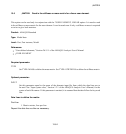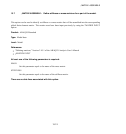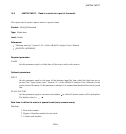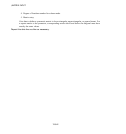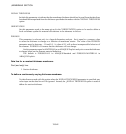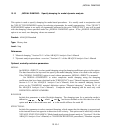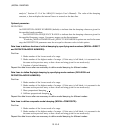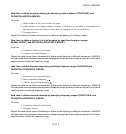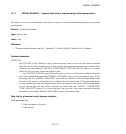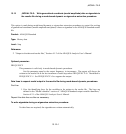
*
MODAL DAMPING
13.10
*
MODAL DAMPING: Specify damping for modal dynamic analysis.
This option is used to specify damping for mode-based procedures. It is usually used in conjunction with
the
*
SELECT EIGENMODES option for selecting eigenmodes for modal superposition. If the
*
SELECT
EIGENMODES option is not used, all eigenmodes extracted in the prior
*
FREQUENCYstepwillbeused
with the damping values specified under the
*
MODAL DAMPING option. If the
*
MODAL DAMPING
option is not used, zero damping values are assumed.
Product: ABAQUS/Standard
Type: History data
Level: Step
References:
•
“Material damping,” Section 20.1.1 of the ABAQUS Analysis User’s Manual
•
“Dynamic analysis procedures: overview,” Section 6.3.1 of the ABAQUS Analysis User ’s Manual
Optional, mutually exclusive parameters:
MODAL
Set MODAL=DIRECT to select modal damping using the dam ping coefficients given in this option.
The data lines after the keyword line specify th e modal damping values to be used in the ana lysis.
If the
*
MODAL DAMPING option is used w ithout parameters, MODAL=DIRECT is assumed.
Set MODAL=COMPOSITE to select composite modal damping using the damping
coefficients that have been calculated in the
*
FREQUENCY step (“Natural frequency extraction,”
Section 6.3.5 of the ABAQUS Analysis User’s Manual) from the material damping factors
given on the
*
DAMPING material definition option (“Material damping,” Section 20.1.1 of
the ABAQUS Analysis User’s Manual). Composite modal dam ping can be used only with
DEFINITION=MODE NUMB ERS.
RAYLEIGH
Include this parameter to select Rayleigh damping. The damping term for a particu lar mode is
defined as
,where and are factors defined on the first data line of the
option and
is the modal mass and is the modal stiffness for mode M.
STRUCTURAL
Include this parameter to select structural damping, which means that the damping is proportional
to the internal forces but opposite in direction to the velocity. This option can be used on ly with the
*
STEADY STATE DYNAMICS (“Mode-based steady-state dynamic analysis,” Section 6.3.8 of the
ABAQUS Analysis User’s Manual) or
*
RANDOM RESPONSE procedures (“Random response
13.10–1
ABAQUS Version 6.1 Module:
ID:
Printed on:



